 Lotus Development Corp.
Lotus Development Corp.
Magellan
Lotus Magellan was a DOS-based search indexing tool announced by Lotus Software in January 1989 and shipped that April. It's retail price was $179 to $199, but was often discounted to below $100.
This product was an interesting concept - essentially it scanned the contents or your hard disk and floppy disks and built a "master index" of its content. Initial indexing was offered at the time of install, which could sometimes take 1 hour to several hours depending on how many files were stored. The Magellan motto used by Lotus Corp. was FIND IT! VIEW IT! USE IT!
With its ability to open 16 different file formats for viewing without the need to load the application (or even have it installed), it was a very useful tool for anyone with a lot of disparate data across many media. Such viewers included Lotus 1-2-3, dBASE III, WordPerfect, Word, DisplayWrite, WordStar, and MultiMate.
In 1989, PC Magazine had this to say about Magellan: "Move over, Peter Norton. Lotus Magellan could well be the finest utility ever written for the PC. This program belongs on every PC. Magellan is a $139 information manager that lets you locate any and every related piece of information on your disk in under 3 seconds, display the information in context, and launch into that program that was the source of the information."
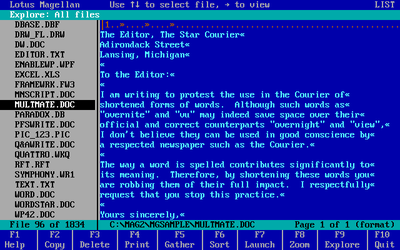
Main Screen showing list of matching files on left and content on right
Magellan was the brainchild of Bill and Larry Gross, whose former company, GNP Development, had been bought by Lotus Development in 1986. Both stayed on as employees of Lotus for 7 more years, creating products under the Lotus brand such as HAL (the natural language interface for Lotus 1-2-3) and Magellan.
One of its key strengths was its fuzzy search capability which connected files by relative frequency of keywords, allowing the user to organise related data no matter where or in what format if existed on the user's computer. Incredibly, the every-word index created by Magellan took up only about 1 MB for every 20 MB indexed.

Magellan's Explore dialog
Using the tool was easy. Simply hit the Explore key (F9), type in a set of words on what you're looking for, and within a matter of seconds Magellan finds all files matching the phrase. You could choose to search the entire index, or just a subset such as all *.DOC files or every file under C:\Docs
A column of matching files appears on the left-hand side of the screen ranked by closeness of match, from which you can then see its content on the right-hand side. It you then chose to edit the file, simply hit the Launch key (F7) to open the parent application of that file type. When the leave the application, Magellan automatically reappears. Using the Gather feature (F5) you can copy portions of files and paste them into a single file.
Unfortunately for Bill and Larry, Lotus really didn't know what to make of Magellan. Bear in the mind the product came along in the 1-2-3 and Agenda heyday, so a small utility wasn't really something they knew how to market. They teamed up with PC Magazine to release a demo on a cover disk in October 1988.
 Magellan 2.0 came out in April 1990 and sold for $195 ($39 for existing users looking to upgrade), offering much new functionality. One of these was support for PKware's zip-compressed files - the viewers could show the files as if unzipped, and you could also search, index, print, gather and copy from zip files. It got a built-in ASCII editor and menu support, and the number of viewers went from 15 to 38, including some for graphics (PIC, GIF, TIFF, PCX and DRW), AlphaWorks database, Compuserve Message, Microsoft Excel, Framework II, Paradox, PFS Professional Write, PFS: First Choice, Q&A Write, and Quattro. Magellan's index would also automatically update itself after a period of keyboard activity. A command recorder was also added that tracks activity within files, which allowed the user to go back and see what was done in the past. File manipulation was also extended, with undelete, backup and restore, and verify now available.
Magellan 2.0 came out in April 1990 and sold for $195 ($39 for existing users looking to upgrade), offering much new functionality. One of these was support for PKware's zip-compressed files - the viewers could show the files as if unzipped, and you could also search, index, print, gather and copy from zip files. It got a built-in ASCII editor and menu support, and the number of viewers went from 15 to 38, including some for graphics (PIC, GIF, TIFF, PCX and DRW), AlphaWorks database, Compuserve Message, Microsoft Excel, Framework II, Paradox, PFS Professional Write, PFS: First Choice, Q&A Write, and Quattro. Magellan's index would also automatically update itself after a period of keyboard activity. A command recorder was also added that tracks activity within files, which allowed the user to go back and see what was done in the past. File manipulation was also extended, with undelete, backup and restore, and verify now available.
In December of the same year, Lotus issued an announcement that a "Bonus Viewer Disk" would be available, free to registered users, and include seven new file viewers and add mouse support.
No further versions beyond 2.0 were created for DOS, but Magellan did make the transition to Windows. Both versions are available for download.
Here are some screenshots of version 1.0 (click on them for full-size pics):
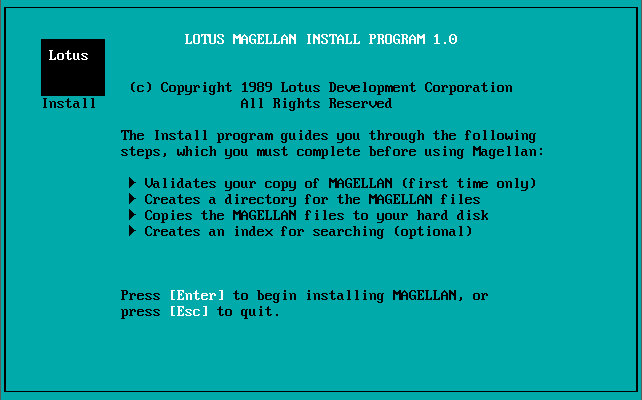
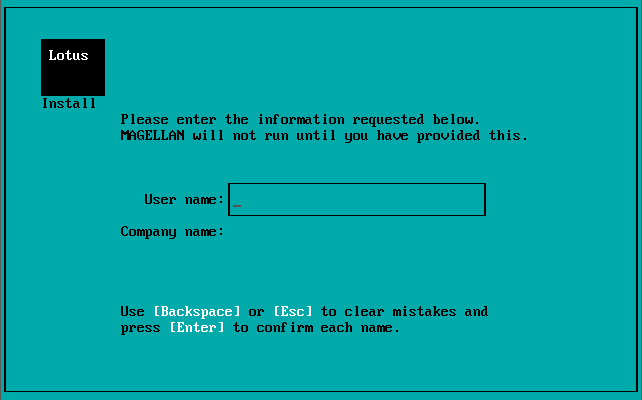
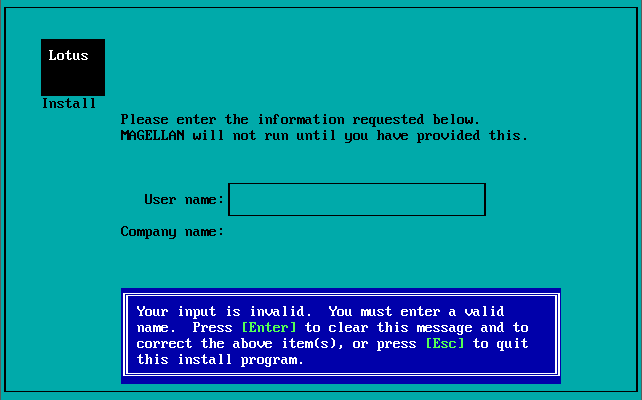
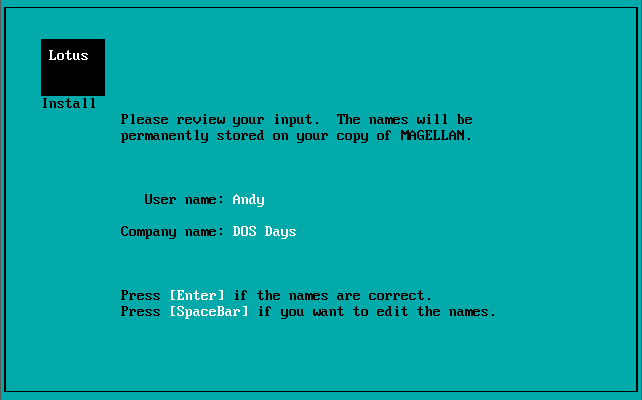

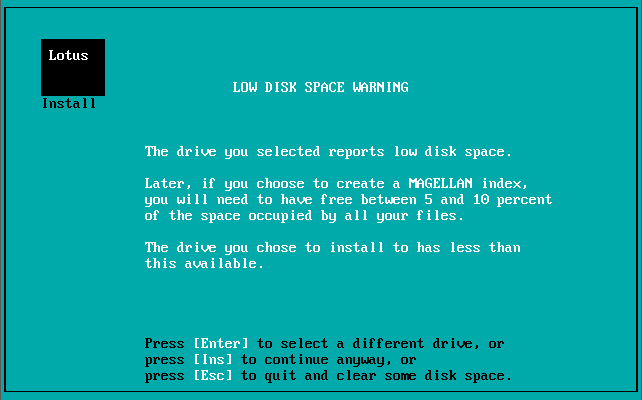
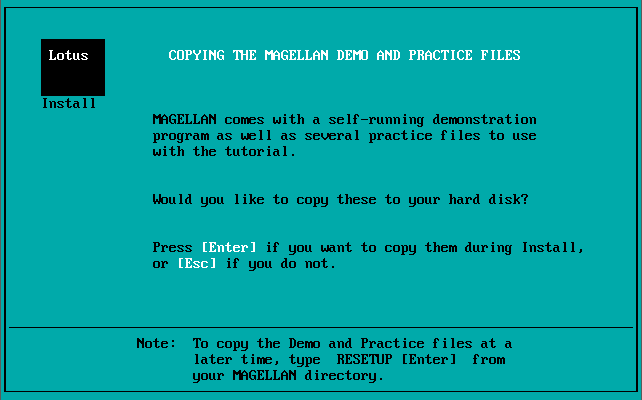
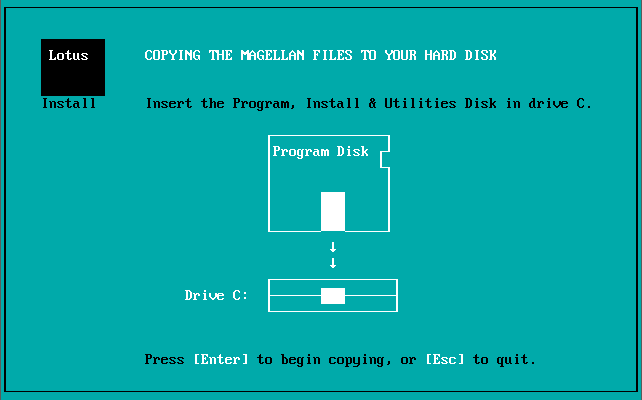
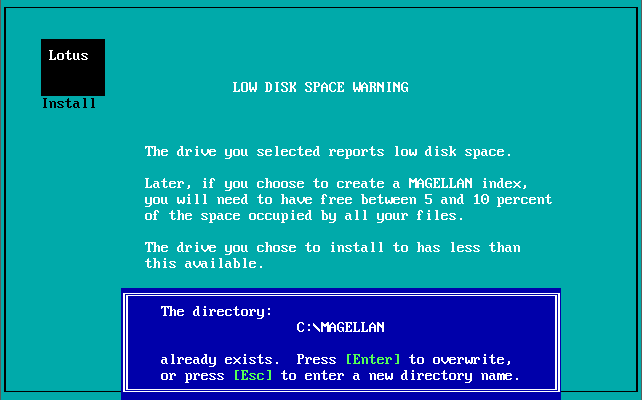
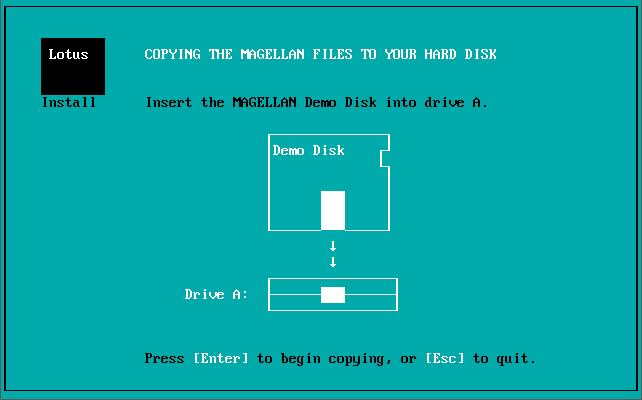
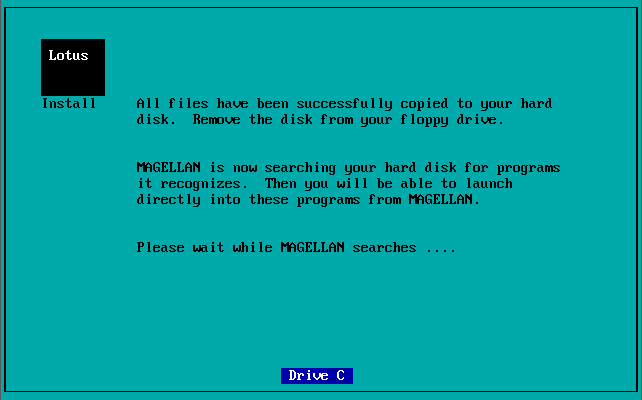

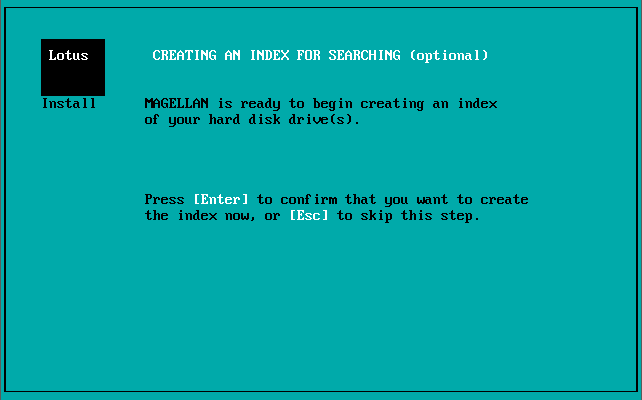

After the file copying stage is complete, Magellan starts by creating an "index" file for all your hard disk's files.
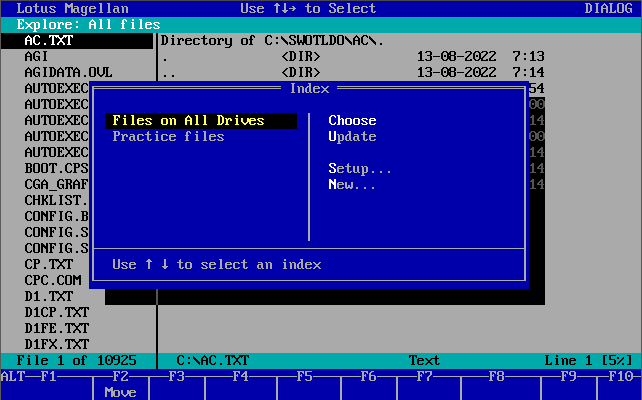

Here you can tell it where to search. You can also create your own indexes just for portions of your hard disk, which can help speed up searches. On the right is the powerful "Explore" option, where you can have Magellan search for files of a specific type, or more generically files that contain specific text, or a combination!
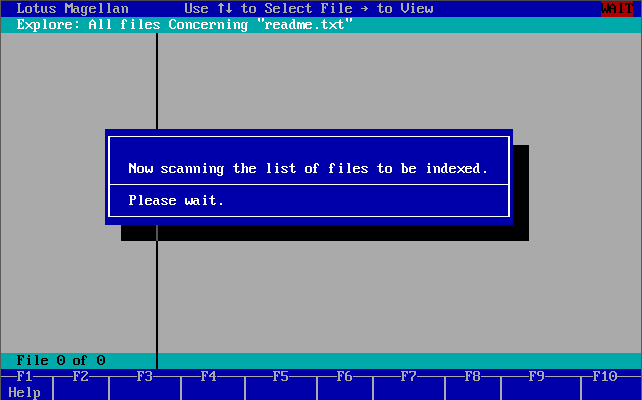
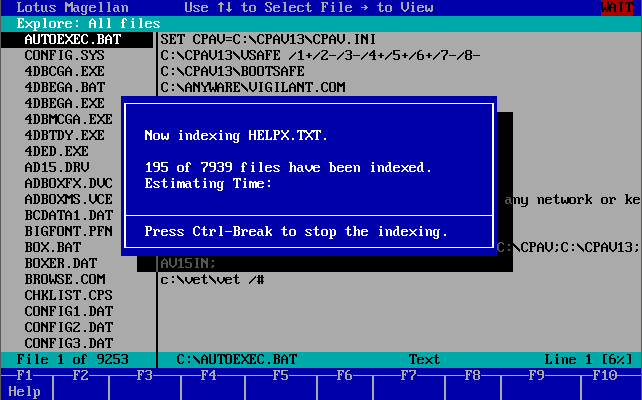
From time to time, Magellan will need to re-scan to detect new files to index.

Here is the standard "Explore" view
that shows the files on the left, and the highlighted file's contents on the right.
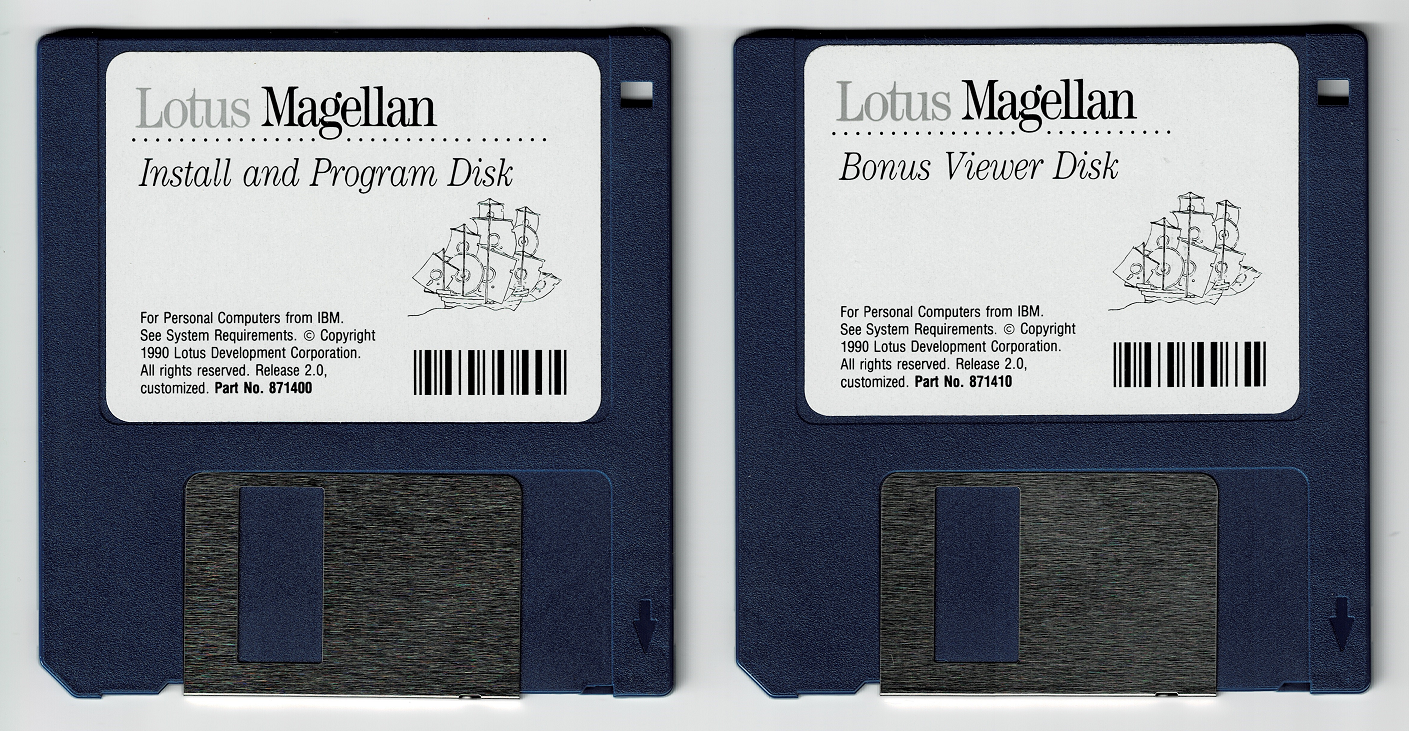
The
Magellan 2.0 floppy disks